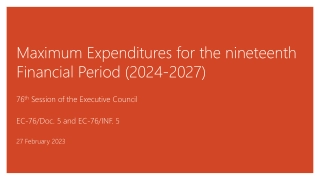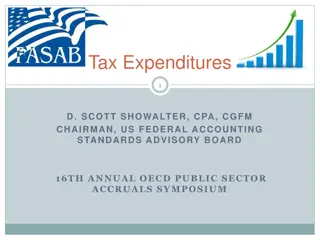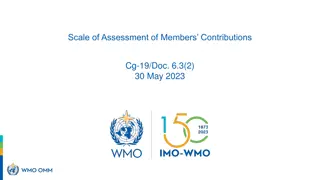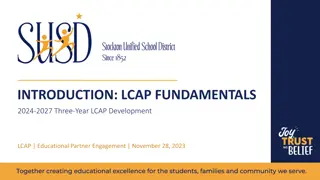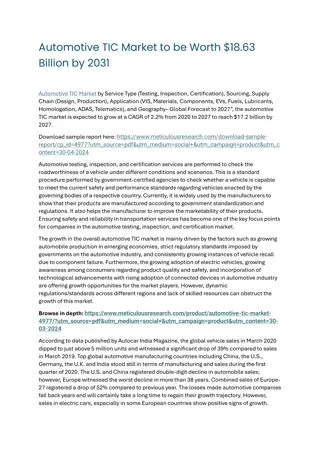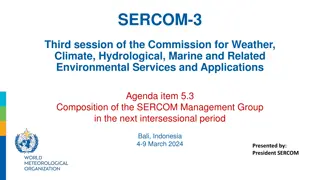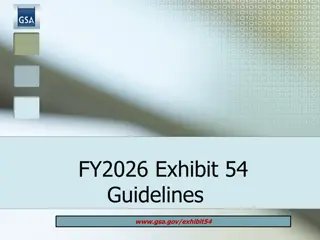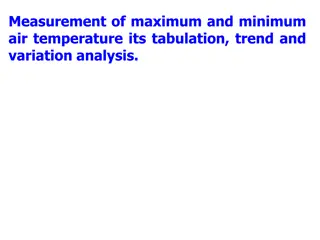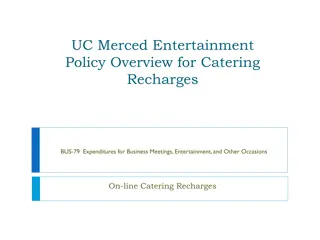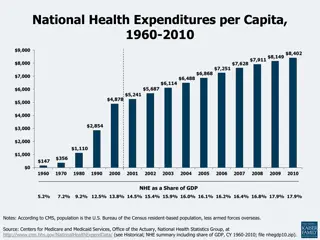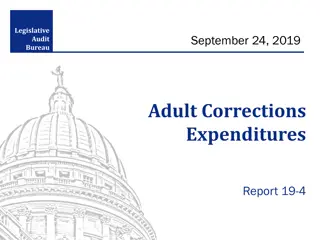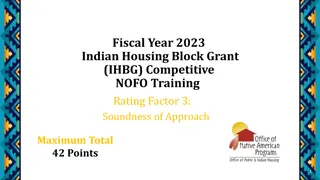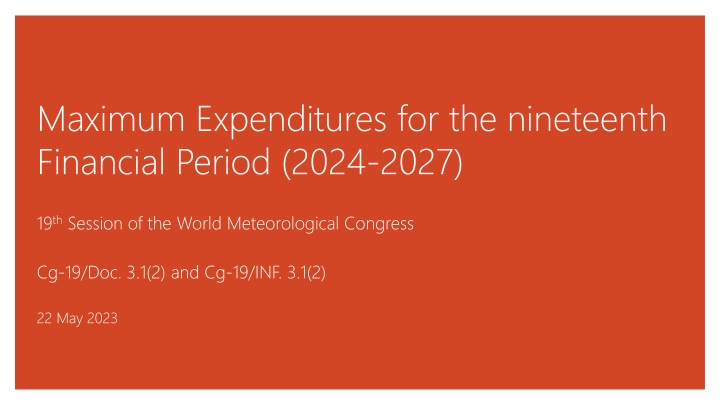
Maximum Expenditure Scenarios for the 2024-2027 Financial Period
Explore the maximum expenditure scenarios for the 2024-2027 financial period, including Zero Nominal Growth (ZNG), Zero Real Growth (ZRG), and the Secretary-General's Proposal. Understand the impact of inflation and the funding levels for key priority areas.
Uploaded on | 1 Views
Download Presentation

Please find below an Image/Link to download the presentation.
The content on the website is provided AS IS for your information and personal use only. It may not be sold, licensed, or shared on other websites without obtaining consent from the author. If you encounter any issues during the download, it is possible that the publisher has removed the file from their server.
You are allowed to download the files provided on this website for personal or commercial use, subject to the condition that they are used lawfully. All files are the property of their respective owners.
The content on the website is provided AS IS for your information and personal use only. It may not be sold, licensed, or shared on other websites without obtaining consent from the author.
E N D
Presentation Transcript
Maximum Expenditures for the nineteenth Financial Period (2024-2027) 19thSession of the World Meteorological Congress Cg-19/Doc. 3.1(2) and Cg-19/INF. 3.1(2) 22 May 2023
Maximum Expenditure Scenarios (2024-2027) Same nominal level as in 2020-2023; therefore, absorbing the impact of the inflation estimated to CHF 6.4 million and reducing programmatic funds available Zero Nominal Growth (ZNG) CHF 271.5 M Unable to finance most Key Priorities Areas 11,141 278,071 Zero Real Growth (ZRG) CHF 278.1 M (2.4% increase over ZNG) Considers inflation of CHF 6.5 million and provides initial funding for most key priority areas through de-prioritization of some core activities included in the ZNG scenario -4,614 271,544 ZNG Key Priority Areas De-prioritization ZRG Secretary-General s Proposal CHF 290.4 M (6.9% increase over ZNG) Considers inflation of CHF 6.8 million and more fully finances key priority areas and other programmatic initiatives without de- prioritization core activities considered in the ZNG scenario. 4,618 290,396 14,234 271,544 ZNG Key Priority Areas Addional initiatives SG's proposal 2
Maximum Expenditure Scenarios (2024-2027) Zero Nominal Growth (ZNG) Zero Real Growth (ZRG) Secretary- General s Proposal Delivery of Core Mandate Delivery of EW4All Delivery of Key Priority Areas - +2.4% +6.9% Change in funding levels from 2020-2023 Full implementation Partial implementation No implementation 3
Historical Inflation Impact of Inflation on the WMO regular budget 1996 2023: 4
Key Priority Areas (Proposal by Scenario) (in CHF thousands) Total funding included in each scenario Key Priority Areas ZNG ZRG 1 SG s Proposal 2 Incremental Early Warnings for All 3,560.4 6,130.9 6,130.9 WMO-coordinated Greenhouse Gas Watch - 1,899.9 2,649.9 Reorganization and optimization of Regional and Rep. Offices - 2,225.1 3,210.3 Additional needs for Plan of Action for Hydrology - 865.8 865.8 Cryosphere and Downstream Impacts - - 1,357.2 Implementation of Enterprise Resource Planning System - 2,000.0 2,000.0 Implementation of IT Strategy and Security - 1,580.0 1,580.0 Total 3,560.4 14,701.7 17,794.1 1 ZRG scenario incorporates de-prioritizations amounting to CHF 4.6 million 2 SG s proposal reinstates de-prioritizations under ZRG and proposes an additional CHF 4.6 million of additional funding 6
Early Warnings for All (EW4All) Funding Summary Benefits of Additional Funding Majority funded in ZNG, full under all others Activities across all LTGs as integrated effort One additional position under ZNG scenario and one additional position under ZRG Additional critical activities to Members, e.g.: Technical guidance on IBF and warning services Training materials on probabilistic forecasts Increased Members migration to WIS 2.0 Investments in methodologies for IBF Benefits of ZNG Funding Extrabudgetary and Resource Mobilization Members to be recognized as the single authoritative voice on warnings and hazards Support to development of uniform norms and standard Accelerated development with Tech Commissions Critical for full implementation for whole WMO community Significant extrabudgetary resources will be required Some contributions already received in discussion with a number of donors for further contributions 7
From Strategy to Operations 1. 2. 3. A meticulous planning process From what will be achieved to how and how much it will cost Full alignment between Strategic and Operating Plans Focus Areas: the main linking element Integrated planning OP as the foundation for the work programmes of the governing bodies
From Strategy to Operations Elaborate planning on how to accomplish each Focus Area (see A, B, C in INF 3.1(1a)) What will be produced? outputs and milestones How? activities and object of expenditure How much will it cost? budget Whowill be involved? TCs, RB, RAs, Secretariat How would we track progress? KPIs What are the risks and opportunities?
WMO Operating Plan 2024-2027 Underpins the maximum expenditure proposal Reflects the 3 budget scenarios Colour-coded budget-scenario impact on output delivery Green: same level of implementation as SG proposal Yellow: partially reduced level of implementation as compared to SG s proposal Pink: no implementation planned under this budget scenario
Additional Details Influencing the Scenarios Represents the estimated financial impact in the WMO budget as result of the increase in the price of good, services and salaries over the Financial Period, quantifying the loss in purchasing power of the organization to deliver its mandate as compared to a nominal budget. Inflation CHF 6.5 M Economies and Efficiencies Financial and programmatic impact of measures, innovations and transformation in processes, technology and structures resulting in more efficient use of resources and savings reinvested in programmatic areas already incorporated in the budget scenarios. CHF 5.8 M Represents all indirect and administrative costs incurred by the Organization. Those cost are disclosed and described in the budget document and proportionally apportioned by Long-Terms Goals/Budget parts in line with the adopted budget format. Represents less than 20% in all scenarios. Apportioned costs CHF 51.7 M 11
Inflationary Impact by Scenario Utilize internationally recognized International Monetary Fund (IMF) providing forecast for all of Switzerland. Most recent update was published in April 2023 ,including long-term forecast through 2027 Amount in millions of Swiss francs Component Currently estimated to be an average of approximately 2% over the full financial period, but could be more significant in early periods ZNG Scenario ZRG Scenario SG s Proposal Inflation has not been calculated on certain non-staff costs (i.e. repayment of the loan) not impacted by inflation Staff Cost 4.3 4.3 4.5 Historical impact of the inflation on the WMO budget from 1996 to 2023: Non-Staff Cost 1.2 1.3 1.4 280 MILLIONS 270 CHF 32 260 Energy Costs 0.9 0.9 0.9 250 240 230 Total 6.4 6.5 6.8 220 210 200 96-99 00-03 04-07 08-11 12-15 16-19 20-23 1996 ZRG real terms total budget 12
Economies and Efficiencies Realized in the 18th Financial Period Additional efficiencies planned for the 19th Financial Period >CHF 5.3 M CHF 5.8 M These efficiencies in the administration area were reinvested during the Financial Period 2020-2023 and are contained in the budget scenarios 2024- 2027: Rationalization of Indirect Costs CHF 3.8 million Reviewed administrative services support to extrabudgetary activities Investment in mid-level Professional Staff with knowledge in critical technical areas Reassignment of costs to be funded by Programme Support Cost Special Account (rather than Regular Budget) Contributions to regional activities, primarily through the creation and filling of seven additional positions in Regional Offices Additional administrative savings CHF 2.0 million Additional reprofiling of administrative positions toward programmatic activities 13
Apportioned Cost within the Scenarios (in CHF thousands) Apportioned Costs ZNG Scenario ZRG Scenario SG s Proposal Legal and Administrative Costs IT Operating and management costs Building Operations and management costs Repayment of building loan Total Apportioned Costs Apportioned Costs as % of Scenario 21,718.2 12,984.8 11,049.2 5,909.2 51,661.4 19.0% 21,718.2 16,564.8 11,049.2 5,909.2 55,241.4 19.9% 21,718.2 16,564.8 11,049.2 5,909.2 55,241.4 19.0% The apportioned costs are allocated to each of the Appropriation Parts as they support the implementation of the Appropriation Parts 14
Expenditure Trends in the 18th Financial Period Expenditures and operations during the second biennium (2022-2023) of 18th Financial Period increasing. Planned near full spend of available funds, including unspent funds from 2020-2021: Travel and other operations increasing since mid-2022 as COVID-19 pandemic restrictions were reduced Inflationary impacts, particularly on energy, impacting expenditures Unspent funds from 2020-2021 approved for re-utilization by EC-73 Being utilized for deferred programmatic activities and growing demands on WMO Supporting critical investment needs (e.g. Headquarters Building, ERP upgrade, Regional Office IT infrastructure) Final elements of Secretariat reorganization Reinvestment in technical staff from generated administrative staff costs savings was mostly completed in 2022 15
View of Scenarios by Object of Expenditure (in Percentage) ZNG Scenario (in %) ZRG Scenario (in %) SG s Proposal (in %) Object of Expenditure Staff costs Short-term staff and consultancy service Travel Experts Travel - Staff Fellowships and training activities Grants and financial contributions Contractual services and operating expenses Repayment of the loan for WMO HQ building Total by Objects of Expenditure 73.7% 4.5% 5.8% 1.6% 1.1% 1.9% 9.2% 2.2% 100.0% 73.2% 4.8% 5.6% 1.6% 0.9% 1.9% 9.9% 2.1% 100.0% 71.9% 5.1% 6.4% 1.7% 1.1% 2.0% 9.8% 2.0% 100.0% 17
Maximum Expenditures 2024-2027 Draft Resolution Draft Resolution 3.1(2)/1 (Cg-19) Authorizes the Executive Council during the nineteenth financial period from 1 January 2024 to 31 December 2027: (1) contributions; To incur maximum expenditures of XXX XXX XXX Swiss francs to be funded through assessed (2) resolution; To distribute the regular budget resources by appropriation part as provided in the annex to this (3) To approve the biennial appropriations for 2024 2025 and for 2026 2027 within these limits; Further authorizes the Executive Council to incur other expenditure from voluntary resources contributing to enhanced implementation of programme activities in line with the Strategic Plan, including co-sponsored programmes and initiatives; Requests the Secretary-General to monitor the implementation of the Operating Plan at both the outcome and output levels, in accordance with the WMO monitoring and evaluation system, in particular in relation to the use of budgetary resources; Invites Members to consider contributing voluntary resources to accelerate, expand and/or scale up the implementation of the Long-term Goals and Strategic Objectives of the Strategic Plan for 2024 2027. 19
FINAC-43 Recommendation Recommendation 1: That Congress: (i) Discusses the proposed Maximum Expenditures for the nineteenth financial period, considering the prioritization of activities that can be funded under the scenarios presented, (ii) Encourages all Members to actively participate in the discussions during Congress, including during the Budget Committee meetings, to enable Congress to reach a consensus Maximum Expenditure amount, and (iii) Adopts Resolution 3.1(2)/1 (Cg-19) Maximum Expenditures for the nineteenth financial Period (2024 2027). 20
Remaining Process Max Expenditures 2024-2027 During Congress Budget Committee considers and provides additional guidance Consensus reached on final maximum expenditure scenario Approval by Cg-19 At EC-77 Secretariat updates EC-77 decision and information documents on Budget 2024-2025 after Cg-19 approval Considers and approves Budget 2024-2025, in line with Cg-19 decision 21
Global Greenhouse Gas Watch (GGW) Funding Summary Benefits of Additional Funding Without funding, GGW would not be realized ZRG includes two new staff positions SG s Proposal also includes additional activity funds ZRG includes leadership role with the WMO community, including strong scientific coordination to support GGW SG s Proposal includes additional activity funding to support Members implementation De-prioritization considerations under ZRG Extrabudgetary and Resource Mobilization Impact within LTG 2 and LTG 3 to maintain balance Reduction of one staff with potential slowdown on GBON and RBON implementation Reduced support to certain sectors within the GAW user community Significant interest from public and private sector WMO coordination needed Resource expected for: further coordination and monitoring efforts within WMO and Accelerate and develop additional GGW activities and downstream services 23
Regional and Representative Office Reform Funding Summary Benefits of Additional Funding Decisions on way forward are expected in 2024- 2027 period Need to ensure funding is available for eventual final decision otherwise could be delay in implementation ZRG would allow for strengthened staffing structure and regional offices for RAI once approach approved SG s Proposal includes additional offices in the second half of 2026-2027 De-prioritization considerations under ZRG Extrabudgetary and Resource Mobilization Elimination of one position supporting capacity development Required funding for fellowship activities would need funding from extrabudgetary activities Increase in virtual rather than hybrid RA meetings Limited potential for extrabudgetary resources Potential support from Members through secondment of staff to Regional Offices 24
Implementation of Plan of Action for Hydrology Funding Summary Benefits of Additional Funding Based on Plan of Action approved by Cg-Ext(2021) Funding requested is for one staff Member to support and coordinate implementation Reduction in risk of non-implementation or delay Focused coordination and monitoring of implementation De-prioritization considerations under ZRG Extrabudgetary and Resource Mobilization Reduced funding under LTG 1 (e.g.): Reduced support to leverage WMO WEB by the GMAS Framework Minimal financial support to the FFI-Advisory Group Reduction in trainings, demonstrations and seminars for aviation Significant extrabudgetary resources already being mobilized for implementation under SO. 1.3 and efforts continue 25
Cryosphere and Downstream Impacts Funding Summary Benefits of Additional Funding Relates to new SO 1.5 Only funded under Secretary-General s Proposal no funding would mean no implementation Reduction in risk of non-implementation or delay Focused coordination and monitoring of implementation De-prioritization considerations under ZRG Extrabudgetary and Resource Mobilization None as not funded under ZRG Extrabudgetary resources would be required to support implementation Efforts on resources mobilization would begin once commitment made by WMO to implement 26
Investment in ERP and IT Strategy Funding Summary Benefits of Additional Funding Full funding under ZRG and SG s Proposal Majority funding from other sources: Savings from 2020-2022 Programme Support Costs Improved protection from and resilience to cybersecurity risks Improvements to efficiency and quality of IT services within WMO Full implementation of the ERP with value-added elements Impact of not Funding Extrabudgetary and Resource Mobilization Increased risk of business disruption or loss due to cybersecurity issues Postponing introduction of efficiencies and improvements to quality of IT services Limited support for project management or enhancement of reporting within the ERP Limited potential for extrabudgetary contributions given the nature of the activities as core to WMO Secretariat 27
Additional Elements Funded under SGs Proposal Impact of Additional Elements Strengthen the functions and coordination of the liaison office in Brussels, focusing on joint efforts or and coordination with EUMETNET, ECMWF and EMETSAT Investment in Atmospheric Environment Research Division to strengthen the work of GAW and the coordination of WMO and the GAW community Improving the timeliness and completeness of the delivery of the Strategic Plan and Operating Plan, for example: LTG 2 Advancing the implementation of the WIGOS to support Members (e.g. the 2040 Vision Space Component, increased capacity development) LTG 3 Increased scope of prediction products provided and increased data assimilation utilizing AI for faster statistical models LTG 4 33% increase in Members supported through twinning coordination on QMS, 12 workshops delivered on strengthened stakeholder project management and implementation LTG 5 Improved greening of IT through power and backup space management LTG 6 Improved top-level political engagement by WMO 28
Incremental budget from ZNG to ZRG and SGs Proposal Scenarios (in CHF thousands) Element ZRG Scenario SG s Proposal Maximum Expenditure at ZNG 2024-2027 Incremental Early Warnings for All WMO-coordinated Greenhouse Gas Watch Regional and Representative Office Reform Plan of Action for Hydrology 271,544.4 2,570.5 1,899.9 2,225.1 865.8 271,544.4 2,570.5 2,649.9 3,210.3 865.8 1,357.2 Cryosphere and Downstream Impacts - De-prioritized activities to fund ZRG (4,614.3) 3,580.0 - ERP System and IT Strategy Implementation 3,580.0 4,618.3 290,396.4 Additional Programmatic Requirements Maximum Expenditure Scenario 2024-2027 - 278,071.4 29

